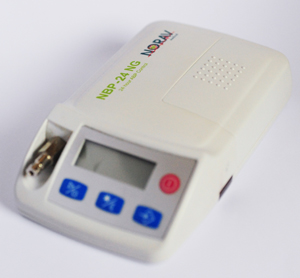 Download this patient information sheet
Download this patient information sheet
Ambulatory Blood Pressure (ABPM) monitoring measures blood pressure at regular intervals over a 24 hour period during normal activities including sleep. This gives much more information that “one-off” BP readings at a specialists or GP’s rooms. ABPM is a 24 hour observation of the BP, in much the same way that a Holter Monitor (see 24 Hour ECG (Holter Monitor) is a 24 observation of the heart rhythm rather than the single measurement or ECG taken in a doctor’s rooms.
A standard BP cuff is put around your upper arm by one of our Technicians. This is connected to a small battery powered pump and recorder, about the size of 2 mobile phones next to each other. At regular intervals – usually 30-60 minutes – The pump inflates the BP cuff to a pressure above your maximum (systolic) blood pressure, then gradually lowering the pressure to below the minimum (diastolic) blood pressure in time with the pulse.
The ABPM gives a short beep, to remind you to keep the arm still and that there will be a pressure sensation felt. Rarely, with very high blood pressures the pressure felt may be uncomfortable. If this is too much for you to tolerate, you may simply take the cuff off. This however means no more useful information will be gained.
Yes. You cannot take a bath or shower with a monitor on, since it is not waterproof. You should let the cardiologist know if you make any changes to your medications while the ABPM is on, or if you forget any medications. You can wear clothes over the ABPM monitor and continue daily activities as usual. It is often very helpful to know the BP overnight, while you sleep, so try to keep the monitor on a bedside table or elsewhere to allow this.